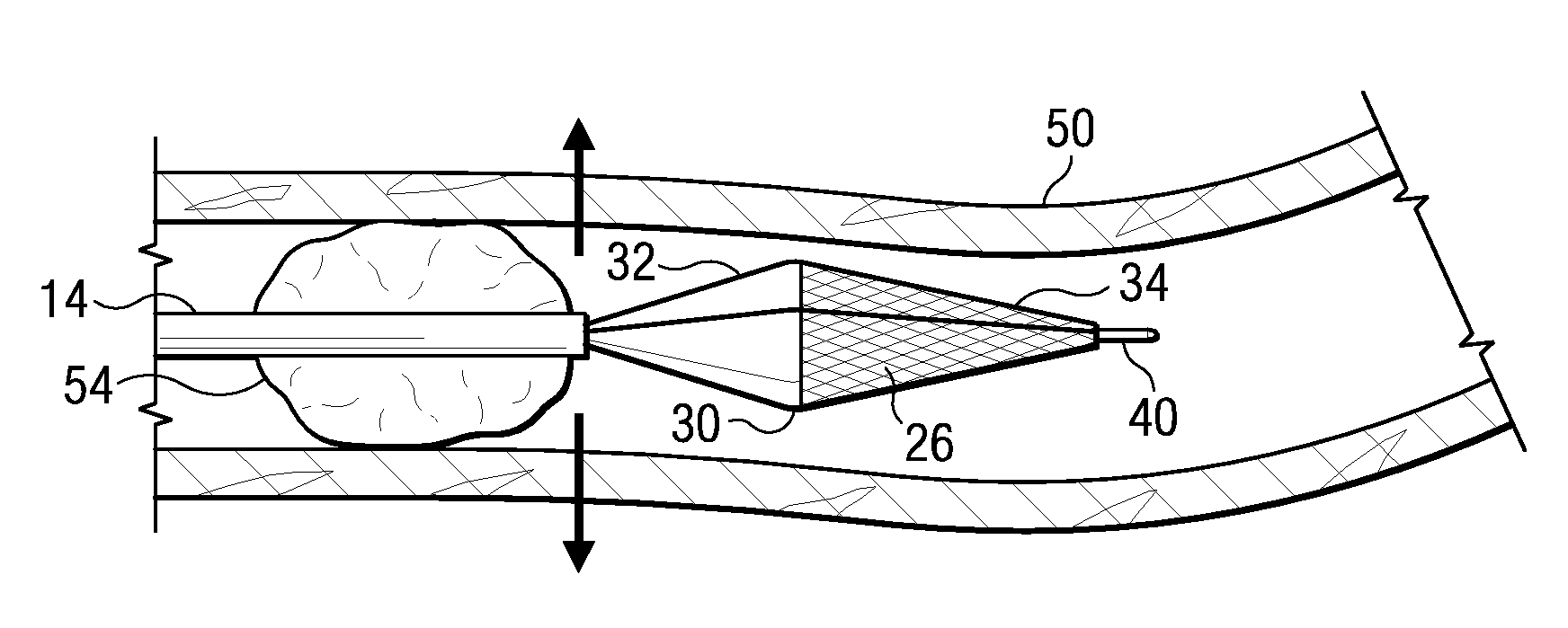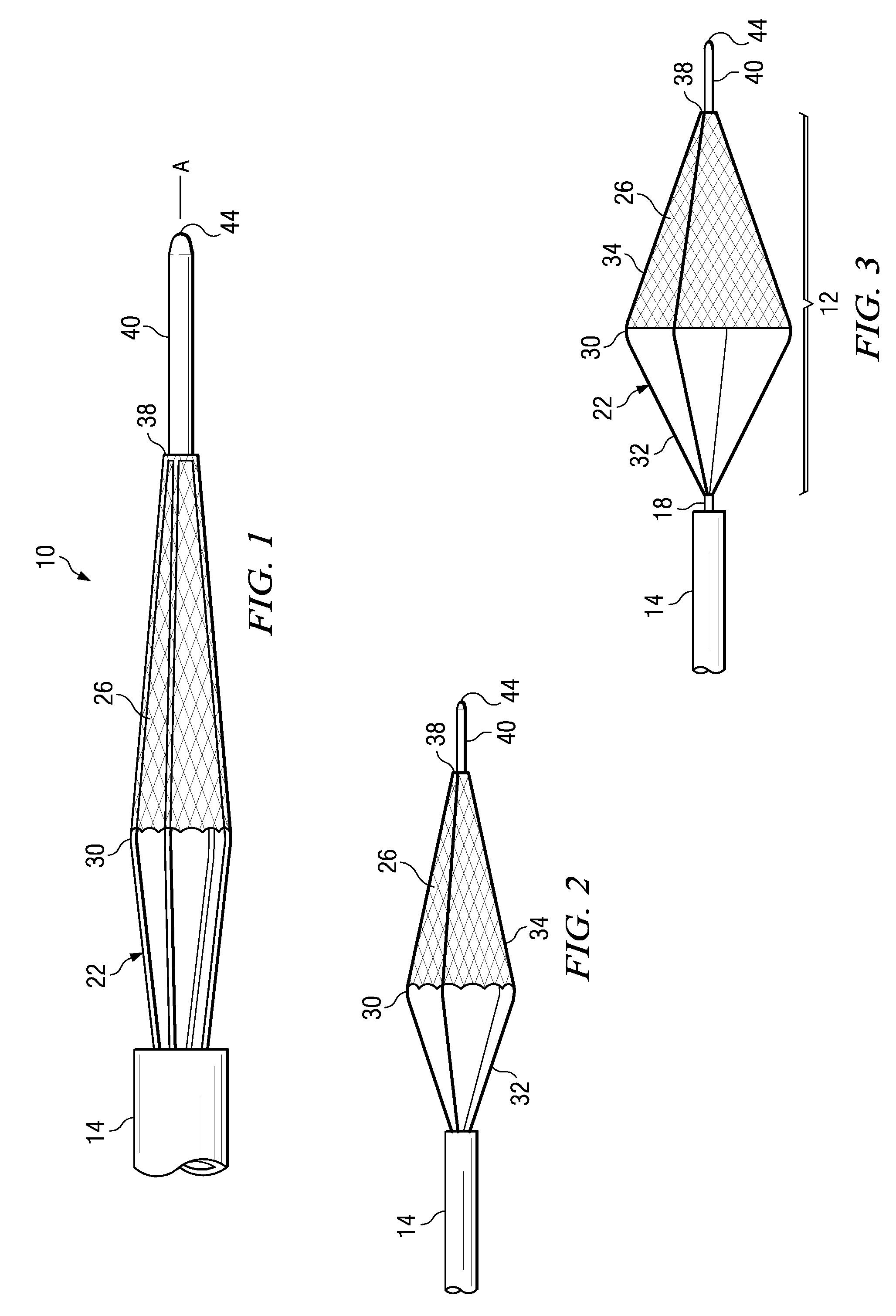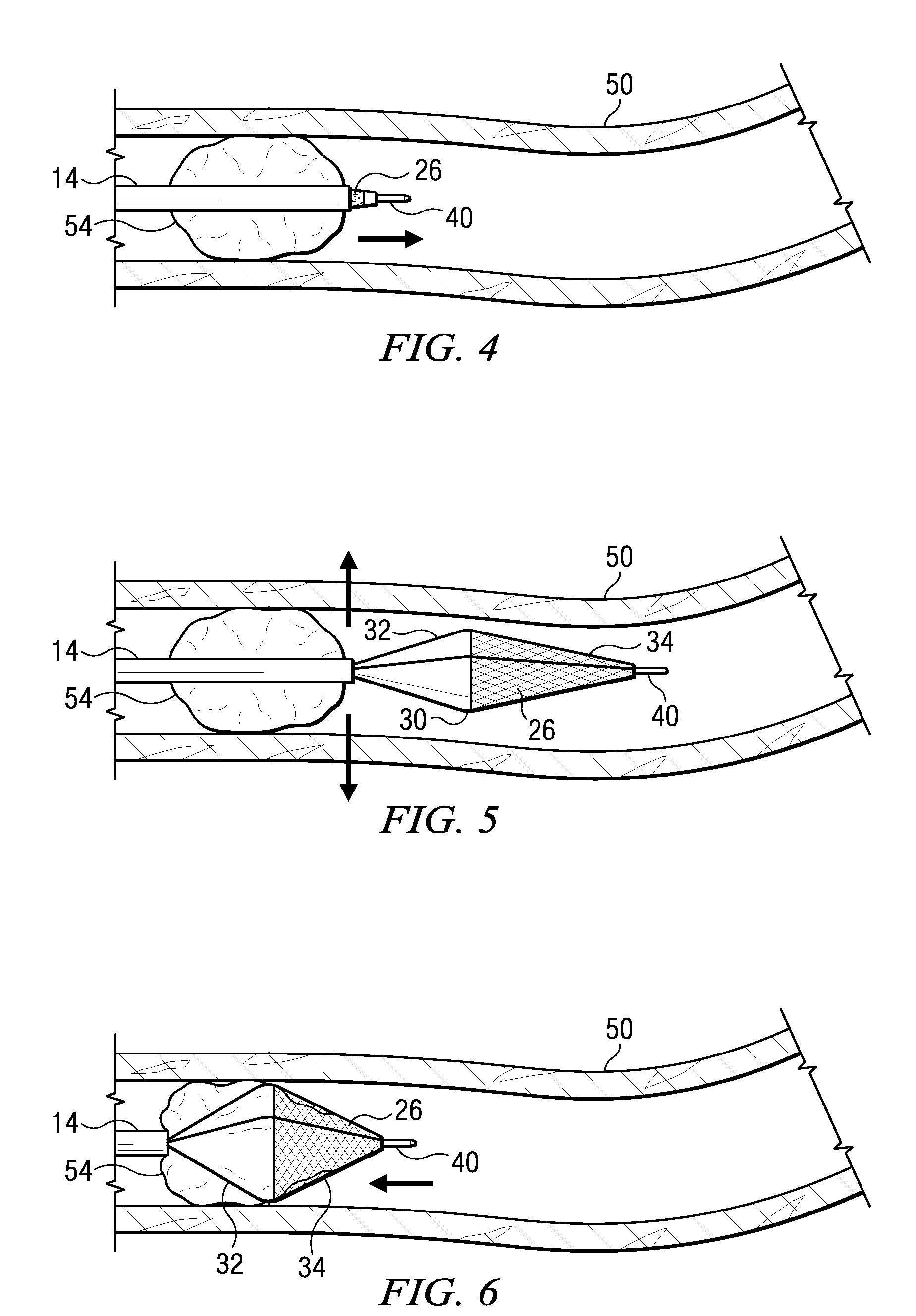Mechanical embolectomy device and method
a technology of embolism and occlusion, applied in the field of mechanical embolism device and method, can solve the problems of limited utility for patients with large clots, significant time constraints of tpa therapy, and cerebral blood flow disruption
- Summary
- Abstract
- Description
- Claims
- Application Information
AI Technical Summary
Problems solved by technology
Method used
Image
Examples
Embodiment Construction
[0028]There is shown in FIGS. 1-3 an embolectomy device 10 according to the invention. The embolectomy device 10 comprises a microcatheter 14 having an elongated shaft such as guide wire 18 extending through an opening in the microcatheter 14. The elongated shaft 18 can have proximal and distal end portions. A retrieval portion 12 can be provided at or near the distal end portion of the elongated shaft 18. The retrieval portion may be formed from or attached to the elongated shaft 18. The retrieval portion 12 can have a plurality of legs such as spring arms 22 that are connected to the guide wire 18. The spring arms 22 are disposed about a long axis A of the guide wire 18. The spring arms 22 are biased or otherwise moveable to extend partially outwardly (FIG. 2) when not constrained entirely by the microcatheter 14. When unconstrained by the microcatheter 14 (FIG. 3) the spring arms 22 can extend laterally outward a maximum distance. Movement of the spring arms 22 relative to the mi...
PUM
 Login to View More
Login to View More Abstract
Description
Claims
Application Information
 Login to View More
Login to View More - R&D
- Intellectual Property
- Life Sciences
- Materials
- Tech Scout
- Unparalleled Data Quality
- Higher Quality Content
- 60% Fewer Hallucinations
Browse by: Latest US Patents, China's latest patents, Technical Efficacy Thesaurus, Application Domain, Technology Topic, Popular Technical Reports.
© 2025 PatSnap. All rights reserved.Legal|Privacy policy|Modern Slavery Act Transparency Statement|Sitemap|About US| Contact US: help@patsnap.com



